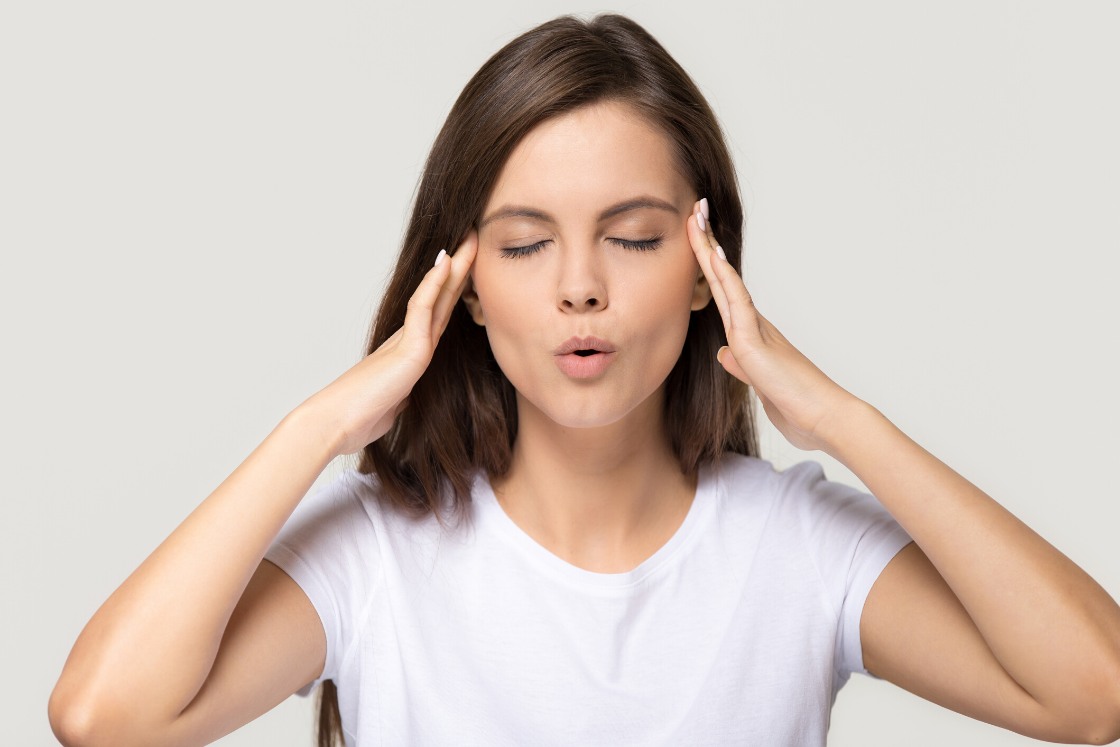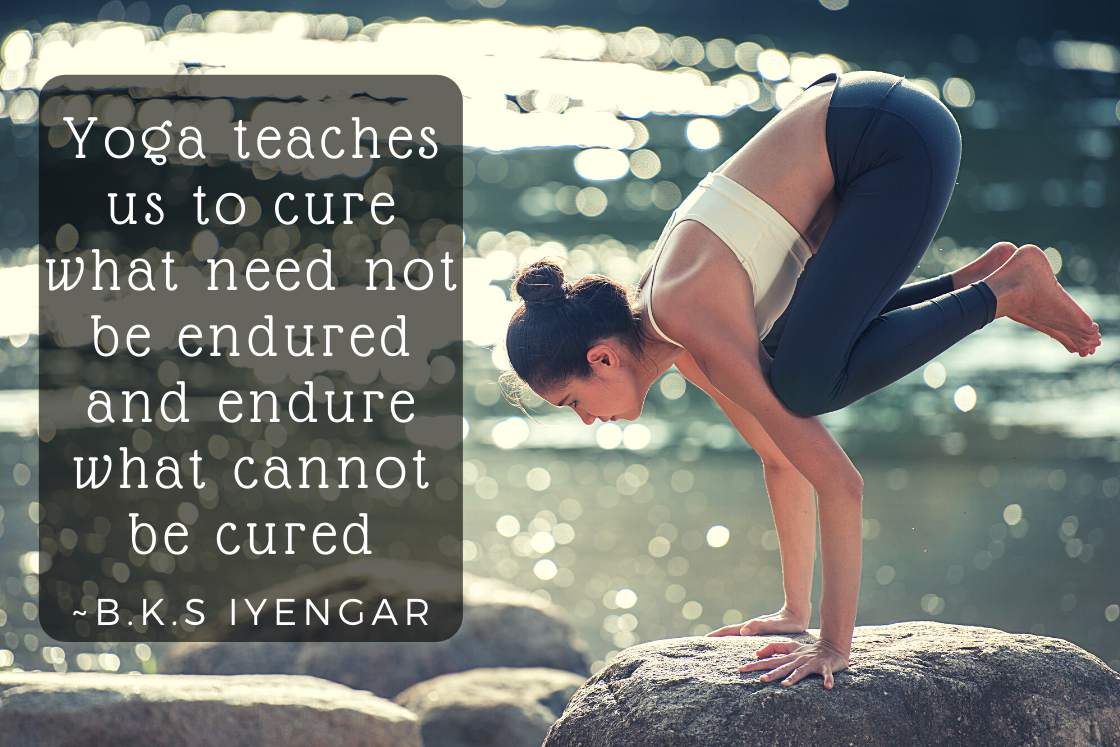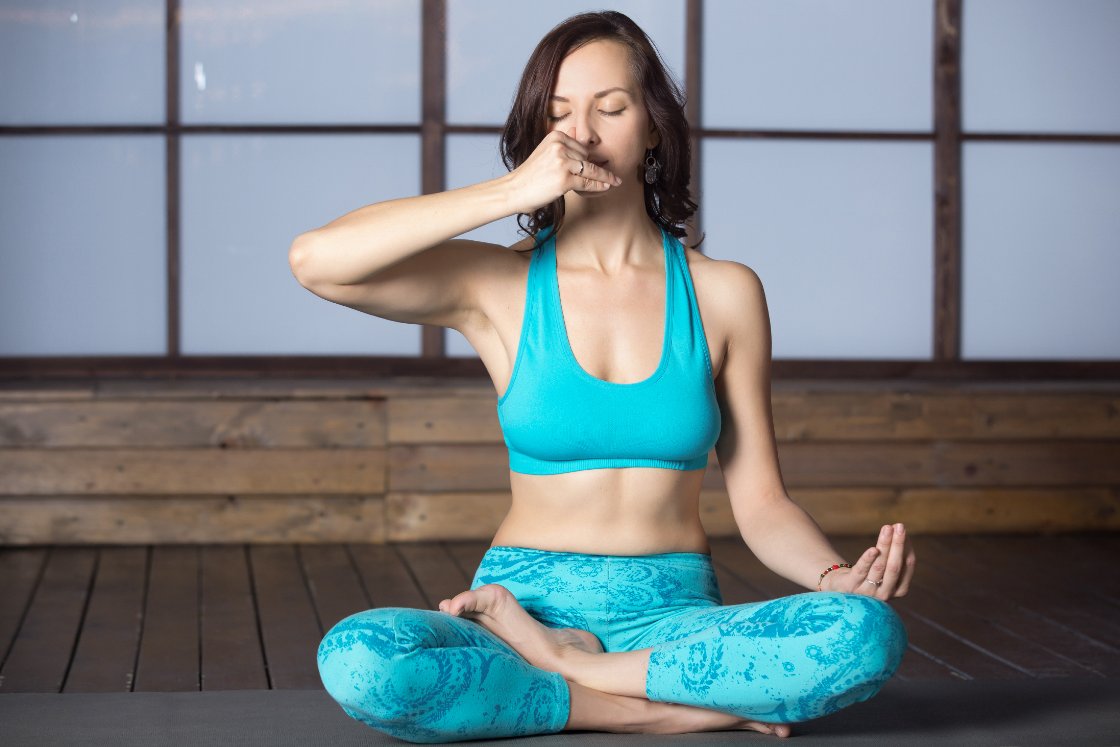
Headaches are one of the most common health problems encountered in daily life. People typically suffer from various types, including migraine headaches, tension headaches, sinus headaches, and cluster headaches. These can arise from numerous causes such as stress, anxiety, and lack of sleep.
Despite the different causes, headaches can often be treated naturally by altering our regular breathing patterns. Yoga refers to these altered breathing patterns as Pranayamas.
The Role of Pranayama in Relieving Headaches
Practicing pranayama can be a great companion if you’re suffering from chronic headaches. Studies have shown that yoga can cure many chronic diseases, and pranayamas, in particular, reduce headaches by lowering stress hormones. Yoga master B.K.S. Iyengar emphasized the healing power of yoga for various ailments.

Bad Breathing Habits Induce Headache
The natural way of breathing is when we do ‘three parts breathing‘ by engaging the whole respiratory system, especially the diaphragm, in our respiration. It comprises a cyclic movement of the abdominal wall with inhalation & exhalation.
But sometimes routine bad breathing habits become the cause of headaches:
- people are shallow breathers and in shallow breathing, we make work from other accessory breathing muscles (upper chest and neck muscles). These muscles are not built to bear the pressure comes from regular respiration so in little time they get exhausted and tender.
With time, this exhaustion in muscles by shallow breathing slowly develops tension in muscles. This tension later can trigger a tension headache. - Restricted supply to oxygen to the brain caused by poor breathing is also a reason for getting cluster headaches. When one is a shallow breather and tired, under stress, sitting for too long, oxygen supply gets obstructed to the brain.
How Pranayama Relieves Headache

Pranayama is simple science that consists of a number of breathing techniques to work on our bad breathing habits so we breathe correctly. By breathing naturally correct, we can avoid many causes of headaches.
Here are a few points that tell the importance of pranayama in headache:
- Most of the pranayamas breathing are complementary to deep breathing exercise. By emulating deep breathing in our routine breathing, we can release the excessive tension in other accessory muscles (neck & upper chest). This mechanism of pranayama relief from a tension headache.
- A headache can occur due to a curve in the spine and contraction of abdominal muscles while sitting on the chair for longer periods. It intensifies muscle tension. Pranayamas techniques also comprise postural alignment of the body, especially the spine alignment. By correcting our posture in a Pranayama session, this cause of headache can be relieved.
- In the case of migraine headache, pranayama work on balancing the left & right lobes of the brain. It reduces the pain in particular areas of eyes and face. These pranayamas techniques let one breathe through alternative nostrils to balance the oxygen level in both lobes.
- Pranayama increases the oxygenated blood supply to the head. This fulfills the need for nutrients and water (dehydration, one of the causes for the headache) to the tissues.
Pranayama Techniques for Headache Relief
While you having a headache, specific Pranayamas directs our breath (or more preciously Prana) to target areas of the body. 5 Pranas or vital life force, when directed to specific areas by pranayama, releases the tension & improve blood circulation in these areas.
Here are 4 pranayamas that may relieve your headache symptoms and balance your physical, mental, and emotional states.
1. Anulom Vilom Pranayama

This pranayama releases any blockages present in nadis (energy channels), which are contributing to migraine headache.
- Sit comfortably on the floor in any cross-legged position, such as easy pose or lotus pose. Lengthen your spine, roll back your shoulders to open up the chest, and take 3 deep breaths.
- Place left hand over the kneecap freely and the right hand makes Vishnu mudra (bend index & middle finger and leave three fingers free as it’s).
- Now begin breathing, take a deep breath in through left nostril while right nostril is closed from the thumb. On following complete inhale, shut your left nostril with ring & little finger and exhale deeply from the right nostril.
- Now this time begin with right nostril and repeat in the same way as stated in step 3.
Do Anulom Vilom Pranayama for 10-12 rounds.
One round of Anulom Vilom = Inhale left + exhale right + inhale right + exhale left.
Once completed 10-12 rounds of Anulom Vilom, relax your body for scalp massage.
Scalp Massage After Anulom Vilom
Sometimes if a headache is causing by any tension in the head region, a scalp massage is beneficial to loosen up tense muscles after anulom vilom.
- Relax your head and place your right hand on the head.
- Press fingers gently on the scalp and feels your scalp is moving with your fingers.
- Keep breathing slowly. If your head is doing a gentle rotation, go for it and while pressing fingers over the scalp, feel the muscle extension & relaxation.
Do it for 5 rounds of rotation, and then slowly release your hand.
2. Bhramari Pranayama

This pranayama will relax your body & mind. It’s most beneficial when the headache is happening because of working in a stressful environment and anxiety has surrounded you.
- Sit comfortably on the floor and relax your body before getting into the breathing.
- Close your ear and eyes with the help of your thumbs and forefingers.
- Now, inhale through your nostrils and exhale by creating a ‘Hmmmmm‘ like sound with the vibration in your throat.
- Experience the sensation of sound throughout your body.
- Slowly down your hand and return back to the normal breathing pattern.
Do 10-12 rounds of this breathing and you will feel a reduction in headache pain.
Forehead Massage After Bhramari
- Bend your elbows and put your thumb & index finger just below the eyebrow level of both eyes.
- keep thumb below eyebrow level and massage with your index finger side by side. It’s like a wiper cleaning the water droplets from the windshield.
- Feel a very gentle movement of index finger from the center of the forehead to extreme sides. As fingers approaching to the extreme sides of the forehead, you will feel a relaxing sensation in your eyes muscles.
Do it for 5 rounds and bring hands down.
Effect of Bhramari on Headache
Bhramari breathing involves deep and slow breathing. The ‘Hmmmmm’ sound in this breathing reduces strain on the nerves surrounding the forehead, neck, shoulder, and upper back regions.
These regions act as the initiating points for the headache. A low level of oxygen in the muscles makes them weak. Prolonge shortage of oxygen makes them easily overworked and prone to headaches.
- Bhramari pranayama supplies oxygenated blood to the neck, shoulder, and upper back muscles.
- Continous blood flow with oxygen and nutrients gradually return these muscles into its natural capability.
- It furthers prevents them from getting vulnerable to transmits the pain to the upper areas of the body.
In this way, ‘humming bee breath’ overcome a headache.
3. Bhastrika Pranayama

However Bhastrika Pranayama is a fast breathing, still, it’s helpful in headache when it’s happening because of digestive disorders.
- Sit in a cross-legged yoga asana such as Padmasana or Sukhasana.
- Place your hands on the knees. Relax and prepare yourself for breathing.
- Take a deep breath in and exhale with a stroke followed by rapid inhale. With every inhales & exhale, rapidly move your abdominal wall out and in respectively.
- Breathe in this manner for 1 minute and slowly return to the natural breathing pattern.
After doing this breathing, simply lay down on your mat in Savasana and let the abdominal wall moving freely for a few minutes.
Effect of Bhramari on Headache
People with digestive disorders often face a headache (like in acid reflux). Gastroesophageal reflux disease (GERD) results in mild and frequent headaches.
Acid reflux could cause shooting pain in the head or sinuses of an individual. So,
- Bhastrika pranayama by rapid and forcible breathing gives the massage to the digestive organs.
- This massage further reduces the excess of acids in the stomach.
In this way, acid reflux that causing a headache can be terminated at its root itself.
4. Udgeeth Pranayama

This breathing exercise relaxes the facial muscles and can reduce any anxiety you may be having.
- Sit comfortably and close your eyes. With both hands, make Gyan mudra and watch your natural breath.
- Now, Inhale slowly through your nostrils, raise your chest up & inhale further.
- On the exhalation, slightly open your lips and slowly start making the sound of “OM” (like OMMMMMMMMM).
- Feel the release of tension from the chest, neck, and facial muscles with exhalation. It’s like your body slowly sinking down and then again inhale.
Udgeeth pranayama is a preparatory breathing exercise for meditation so it can help you in many ways to relieve the headache symptoms.
Effect of Udgeeth Pranayama on Headache
As Udgeeth pranayama is slow & deep breathing, it lowers high blood pressure. Hypertension or High BP is one of the eminent reason for the headache .
High blood pressure affects the blood and brain barrier, which increases pressure on the brain. This causes hemorrhage in surrounded organs.
It further causes swelling in the brain tissue, due to less space brain exerts pressure on the cranium (inner skull). This overall process results in a headache with dizziness.
By performing Udgeeth pranayama, high blood pressure can be lowered by its relaxing mechanism, and thus, Headache can be relieved.
Conclusion
Incorporating these pranayama techniques into your daily routine can greatly reduce how often and how severe your headaches and migraines are. By focusing on your breath and practicing these exercises regularly, you can naturally ease pain and enhance your overall well-being. Always consult with a healthcare professional before starting any new exercise routine, especially if you have chronic health conditions.




